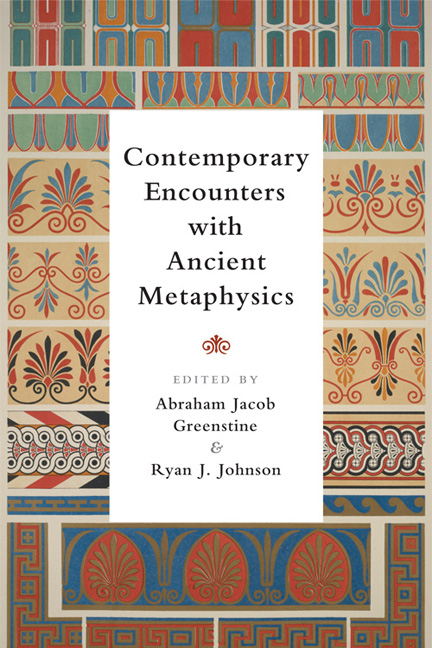Book contents
- Frontmatter
- Contents
- Acknowledgements
- Note on the Text
- Notes on Contributors
- 1 A Thousand Antiquities
- Part I Plato
- 2 The Muses and Philosophy: Elements for a History of the Pseudos [1991]
- 3 Odysseus’ Changed Soul: A Contemporary Reading of the Myth of Er
- 4 Plato's Protagoras: The Authority of Beginning an Education
- 5 Univocity, Duality, and Ideal Genesis: Deleuze and Plato
- 6 “Adjust Your Dread”: Badiou's Metaphysical Disposition
- Part II Aristotle
- Part III Epicureans, Stoics, Skeptics, and Neo-Platonists
- Part IV Postscript
- Index
3 - Odysseus’ Changed Soul: A Contemporary Reading of the Myth of Er
from Part I - Plato
- Frontmatter
- Contents
- Acknowledgements
- Note on the Text
- Notes on Contributors
- 1 A Thousand Antiquities
- Part I Plato
- 2 The Muses and Philosophy: Elements for a History of the Pseudos [1991]
- 3 Odysseus’ Changed Soul: A Contemporary Reading of the Myth of Er
- 4 Plato's Protagoras: The Authority of Beginning an Education
- 5 Univocity, Duality, and Ideal Genesis: Deleuze and Plato
- 6 “Adjust Your Dread”: Badiou's Metaphysical Disposition
- Part II Aristotle
- Part III Epicureans, Stoics, Skeptics, and Neo-Platonists
- Part IV Postscript
- Index
Summary
PREAMBLE
In April of 2014, while I was in residence at the Townsend University Center at UC Berkeley, I taught a four-week graduate seminar entitled “Animation/ Reanimation: New Starts in Eternal Recurrence,” and, in relation to that seminar, I delivered publically the Una's Lecture, entitled “Odysseus's Changed Soul: A Contemporary Reading of Plato's Myth of Er.” Two years later, in April of 2015, I revised this lecture in preparation for publication in the present volume, and delivered it as a new talk at UC San Diego. The title of the lecture this time was “Plato Reader of Agamben, From Homo Sacer to the Myth of Er.” In both versions, I referred to Giorgio's Agamben Homo Sacer: Sovereign Power and Bare Life, and this for four main reasons. First, because Er, as Plato describes him, immediately appeared to me as a possible figure of the homo sacer. Second, because the myth addresses the issue of the choice (αἵρεσις) of lives by the souls of the dead before their reincarnation, and because “life” here is to be understood as ζωή and βιός at the same time. Third, because the myth proposes in its own terms a reflection on sovereignty, and fosters what seems to be the fi rst critique of it, thus already articulating a distinction between βασίƛεια and the pure principle of exception, that is the very specifi c combination of injustice and violence that Plato calls tyranny. Fourth, and in this case inverting the direction of analysis from that of Agamben's, because Plato's argument may be read as an anticipated response to Agamben's insistence on “impotentiality” as a possible deconstitution of sovereignty. Socrates, as I argue, is the anti-Bartleby par excellence, and incarnates quite another version of such a deconstitution. I am then reading Plato through Agamben, and Agamben against himself through Plato.
I then sent my paper to Jacob Greenstine, who helpfully informed me of the recent publication in English translation of Agamben's The Use of Bodies, the final volume in the Homo Sacer project, which contains a short chapter entitled “The Myth of Er.”
- Type
- Chapter
- Information
- Contemporary Encounters with Ancient Metaphysics , pp. 30 - 46Publisher: Edinburgh University PressPrint publication year: 2017

